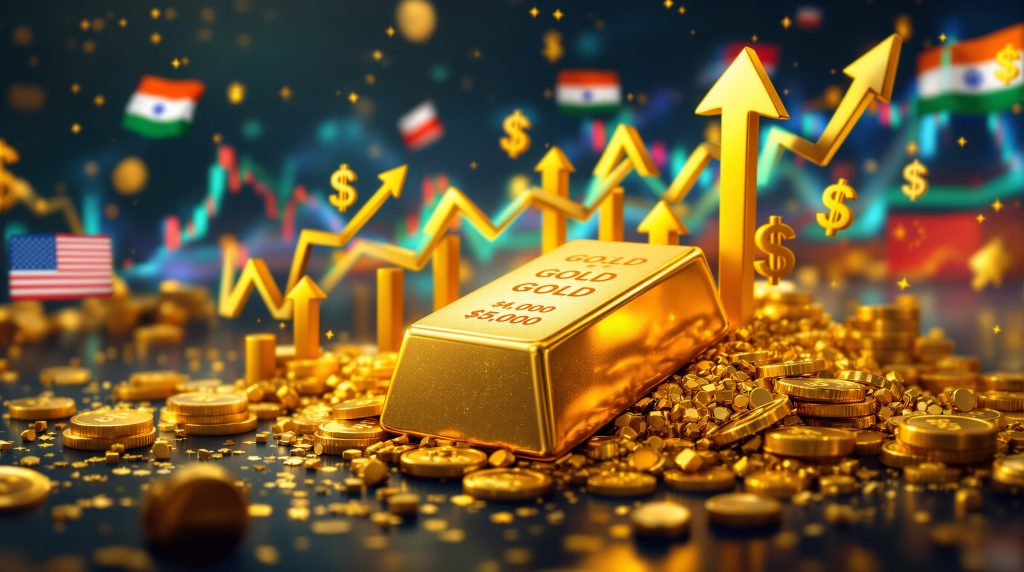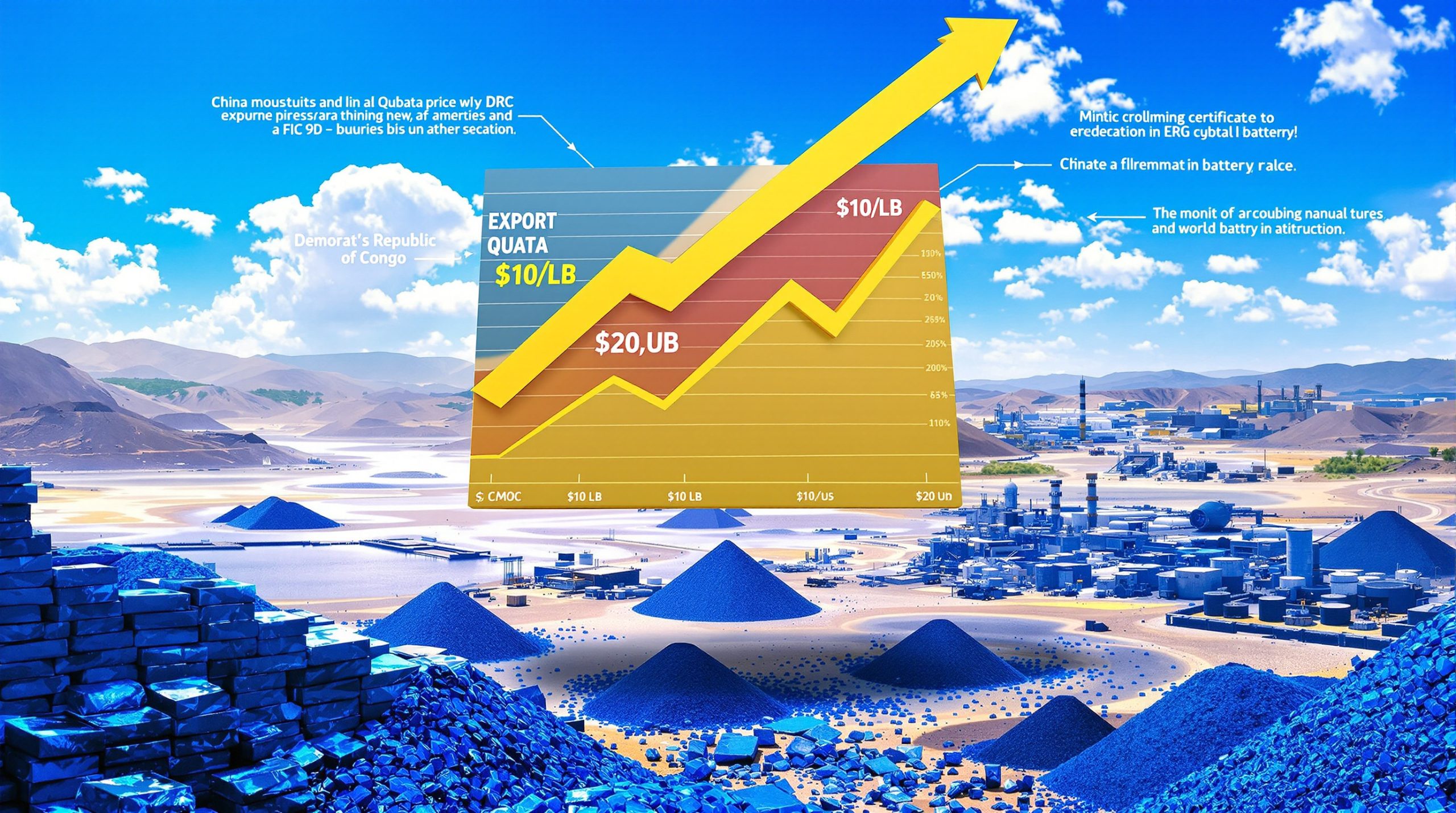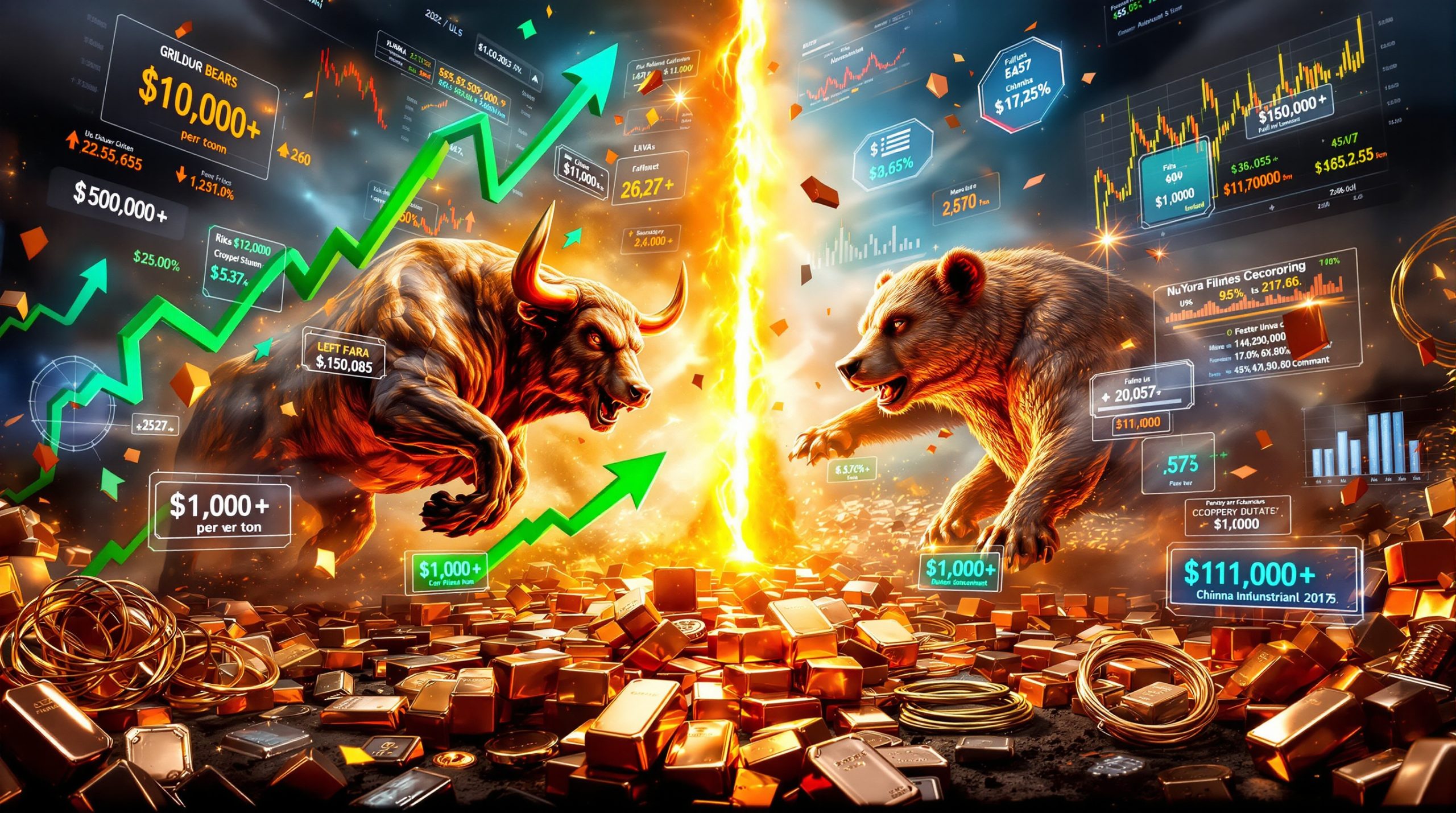What's Behind Gold's Meteoric Rise to $4,000?
Gold's breakthrough to $4,000 per ounce on October 8, 2025, marks a historic milestone in the precious metal's journey. This represents the 45th new all-time high of 2025 alone, with the metal surging from $3,500 to $4,000 in just 36 days—an unprecedented pace that has investors questioning whether we're witnessing a sustainable trend or approaching a turning point.
The rapid ascent has been remarkable both in speed and magnitude. Previous $500 price increments took an average of 1,036 days to achieve, according to data from the World Gold Council. This latest surge represents a 14% relative increase, averaging about 50 basis points per day—similar to the momentum seen during gold's notable 2011 bull run.
While comparisons to gold's performance in 1979 are tempting, today's market dynamics reveal a more complex picture. Gold is indeed on track for its strongest calendar year performance since 1979, but focusing solely on annual returns oversimplifies the narrative. The current gold market performance exists in a fundamentally different macroeconomic, geopolitical, and investment landscape.
How Does This Rally Compare to Historical Gold Bull Markets?
Placing the current rally in historical context provides valuable perspective on its sustainability and potential trajectory. The current bull market, at 735 days (as of October 2025), remains significantly shorter than several major historical gold rallies:
| Bull Market Period | Duration (Days) | Total Return |
|---|---|---|
| 1976-1980 | 1,309 | 721% |
| 2001-2011 | 3,678 | 650% |
| 2015-2020 | 1,773 | 96% |
| Current (2023-2025) | 735 (ongoing) | 109% (so far) |
The average duration of previous major gold rallies was 1,062 days—significantly longer than our current 735-day run. This historical context suggests the potential for continued momentum despite the rapid price appreciation we've already witnessed.
More importantly, each bull market emerged from distinct economic conditions. The 1976-1980 rally occurred amid stagflation and collapsing faith in fiat currency, while the 2001-2011 run coincided with dollar weakness, low interest rates, and the global financial crisis. Today's rally has its own unique drivers that warrant careful examination.
What Key Factors Are Driving Gold to New Heights?
Macroeconomic Forces Creating Perfect Conditions
Several interconnected factors have converged to create ideal conditions for gold's ascent:
-
Investment Demand Surge: Western investors have led a significant increase in gold investment, with physically-backed ETFs adding 634 tonnes year-to-date. Since late August 2025 alone, these funds have attracted approximately $21 billion in new investment, bringing the annual total to $67 billion as of October 10, 2025.
-
Geopolitical Tensions: Escalating global conflicts and trade disputes have enhanced gold's appeal as a safe-haven asset. Recent developments, including President Trump's statement that he sees "no reason" to meet with Chinese President Xi and threats of new tariffs, have intensified investor concerns about global stability.
-
Dollar Weakness: The US dollar has faced persistent pressure throughout 2025, making gold more attractive to international investors seeking to hedge against currency depreciation.
-
Federal Reserve Policy: Market expectations of further interest rate cuts under the Trump administration have reduced the opportunity cost of holding non-yielding assets like gold, providing additional tailwinds for the precious metal.
-
Market Volatility Concerns: Growing fears about potential corrections in both equity and bond markets have driven diversification into gold as a portfolio stabilizer and hedge against market turbulence.
Central Bank Buying Adds Structural Support
Central banks worldwide have continued their multi-year gold accumulation trend, providing both physical demand and reinforcing the positive narrative around gold as a strategic reserve asset. This institutional buying creates a strong foundation beneath the current rally and signals gold's ongoing importance in the global financial system.
The combination of these factors has created a perfect storm for gold prices analysis, with each element reinforcing the others in a positive feedback loop that has propelled prices higher at an accelerating pace.
Is There Still Room for Gold to Run Higher?
Despite the rapid price increase, several indicators suggest the current rally may still have substantial momentum:
ETF Holdings Show Runway for Further Growth
Gold ETF holdings have increased substantially but remain 2% below their November 2020 peak of 3,929 tonnes. Current holdings stand at 3,857 tonnes after adding 638 tonnes this year.
Importantly, during the move from $3,500 to $4,000, ETFs added only 128 tonnes—a relatively modest amount compared to previous periods of strong price appreciation. This suggests that the recent price move wasn't driven primarily by ETF investment flows, indicating potential for additional buying as more investors seek exposure.
Historical Accumulation Phases Suggest Early Stages
Looking at previous gold ETF "bull runs" since their introduction in 2003:
- First major run: 221 weeks, adding 1,823 tonnes
- Second major run: 253 weeks, adding 2,341 tonnes
- Current run: 74 weeks, adding 788 tonnes
The current accumulation phase represents only 30-40% of the average tonnage added during previous bull markets, suggesting potential for continued buying. The relatively young age of the current cycle (74 weeks versus the historical average of 237 weeks) points to a rally that may still be in its early-to-mid stages rather than approaching exhaustion.
COMEX Positioning Remains Moderate
Net long positions in COMEX gold futures, while elevated, haven't reached the extreme levels seen at previous market peaks. As of late September 2025, net long positions had increased by just 116 tonnes during the current run—a modest figure that suggests speculative positioning, while bullish, isn't yet at levels typically associated with major market tops.
These metrics collectively indicate that gold ownership doesn't appear saturated despite the significant price gains, leaving room for further investment strategies and price appreciation.
What Short-Term Risks Could Challenge Gold's Momentum?
Despite the strong fundamental backdrop, several tactical challenges could introduce volatility in the near term:
-
Portfolio Rebalancing: Strategic investors approaching target gold allocations may begin trimming positions to maintain desired asset allocation percentages. As gold's weighting in portfolios increases due to price appreciation, institutional investors typically rebalance by reducing exposure.
-
Technical Overbought Signals: RSI readings above 90 and prices more than 20% above their 200-day moving average suggest an overheated market by traditional technical analysis standards. These extreme readings often precede short-term corrections or consolidation periods.
-
Liquidity Pressures: Tightening credit conditions could force liquidation of well-performing assets like gold as investors seek to raise cash. During periods of market stress, even assets with strong fundamentals can face selling pressure.
-
Potential Dollar Rebound: A short squeeze in the US dollar remains a significant risk despite recent resilience. The heavily positioned dollar short trade could reverse quickly if economic data or policy shifts surprise markets.
-
Physical Demand Weakness: The rapid price increase will likely dampen consumer jewelry and bar/coin demand during the traditionally strong seasonal period in the fourth quarter. Price-sensitive buyers in major markets like India and China often delay purchases when prices rise sharply, according to CNBC's recent analysis.
-
Geopolitical Resolution: Any easing of global tensions could trigger a rotation from safe havens to risk assets. Resolution of trade disputes or geopolitical conflicts would potentially reduce the fear premium currently supporting gold prices.
These short-term risks don't necessarily invalidate gold's longer-term bull case but could introduce significant volatility or temporary pullbacks along the way.
Why Gold's Long-Term Outlook Remains Constructive
Looking beyond short-term volatility, several structural factors support gold's long-term case:
Expanding Investor Base Creates Sustainable Demand
The gold market has evolved significantly with:
- Growth in low-cost ETF products making gold more accessible to retail investors
- Introduction of smaller-denomination futures contracts (including 1oz COMEX futures) lowering barriers to entry
- Regulatory changes in major markets like China and India opening doors to institutional allocation
These developments have broadened gold's investor base considerably, creating more diverse and potentially stable sources of demand compared to previous bull markets.
Macroeconomic Backdrop Remains Supportive
Key factors favoring gold include:
- Persistent US dollar weakness encouraging foreign hedging
- Ongoing policy uncertainty in major economies
- Rising geopolitical tensions creating demand for safe-haven assets
- Inflation concerns and labor market weakness increasing recession risk
The combination of these factors provides fundamental support for gold price forecast that extends beyond short-term investment flows or market sentiment.
Gold Investment Market Shows Room for Growth
The current gold investment cycle appears to be in its early-to-mid stages rather than approaching exhaustion. Historical patterns suggest that both the duration and magnitude of the current rally have room to expand further before reaching levels comparable to previous bull market peaks.
Moreover, gold's relative performance versus other asset classes and its role in diversified portfolios continue to attract new investors seeking to hedge against multiple forms of uncertainty.
How Should Investors Interpret Gold at $4,000?
The $4,000 milestone represents a psychological level rather than a fundamental one. While comparisons to 1979's performance are tempting, they oversimplify the current market dynamics.
Several factors suggest the rally hasn't exhausted itself:
- High real interest rates that are likely to decline
- Tight credit spreads with potential to widen
- Elevated stock valuations vulnerable to correction
- A broadening investor base providing structural support
The World Gold Council's Investor Scorecard highlights multiple supportive factors in the current macroeconomic environment, including real rates, equity valuations, credit spreads, and dollar valuation metrics—all indicating continued potential for gold.
However, investors should remain alert to potential short-term volatility given the rapid price appreciation and technical overbought signals. The extreme speed of the recent move suggests some consolidation or profit-taking is increasingly likely, even if the longer-term trend remains intact.
What's Next for the Gold Market?
Gold's path forward will depend on how investors navigate the balance between tactical challenges and strategic strengths. The $4,000 level will likely be tested as both support and resistance in coming weeks.
Short-term price action may be volatile as the market digests this significant milestone, but the underlying fundamentals—including central bank buying, geopolitical uncertainty, and evolving monetary policy—continue to provide a solid foundation for gold's structural bull market.
For long-term investors, gold's strategic benefits as a portfolio diversifier and record-high inflation hedge remain compelling despite the potential for near-term consolidation after such a dramatic price surge, as ABC News recently reported.
Investor Takeaway: While short-term tactical risks exist, gold's strategic case remains strong. Investors might consider using periods of consolidation or pullbacks as opportunities to build or maintain strategic allocations rather than attempting to time short-term moves in an increasingly volatile market.
Conclusion: Trend or Turning Point?
While gold's rapid ascent to $4,000 raises legitimate questions about sustainability, the evidence suggests we're witnessing a trend rather than a turning point. The current bull market remains shorter in duration and smaller in magnitude than previous cycles, with positioning data indicating room for further growth.
That said, investors should prepare for increased volatility as markets test this new price level. The tactical challenges facing gold in the near term are real, but they exist within a broader context of supportive fundamentals and structural demand growth.
Rather than the end of gold's bull run, the $4,000 milestone may simply mark the beginning of its next chapter—one characterized by higher baseline prices and greater recognition of gold's role in a rapidly evolving global financial landscape.
Disclaimer: This analysis represents an assessment based on current market conditions and historical patterns. Financial markets remain inherently unpredictable, particularly during periods of elevated volatility and macroeconomic uncertainty. Investors should consult with financial advisors to determine appropriate allocations based on their individual circumstances, risk tolerance, and investment objectives.
Looking to Spot the Next Major Mineral Discovery Before the Market Does?
Discovery Alert's proprietary Discovery IQ model instantly notifies investors about significant ASX mineral discoveries, transforming complex geological data into actionable investment opportunities. Explore historic examples of how major discoveries can generate exceptional returns by visiting our dedicated discoveries page and start your 30-day free trial today.




